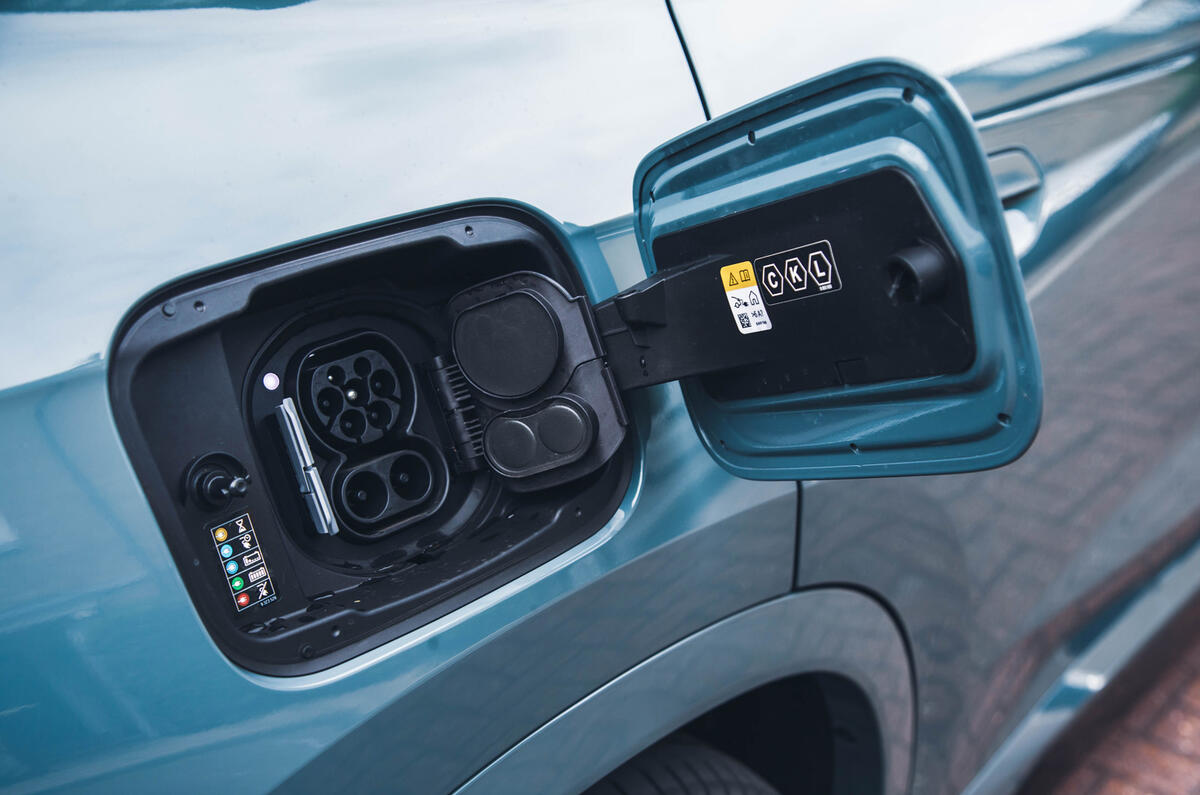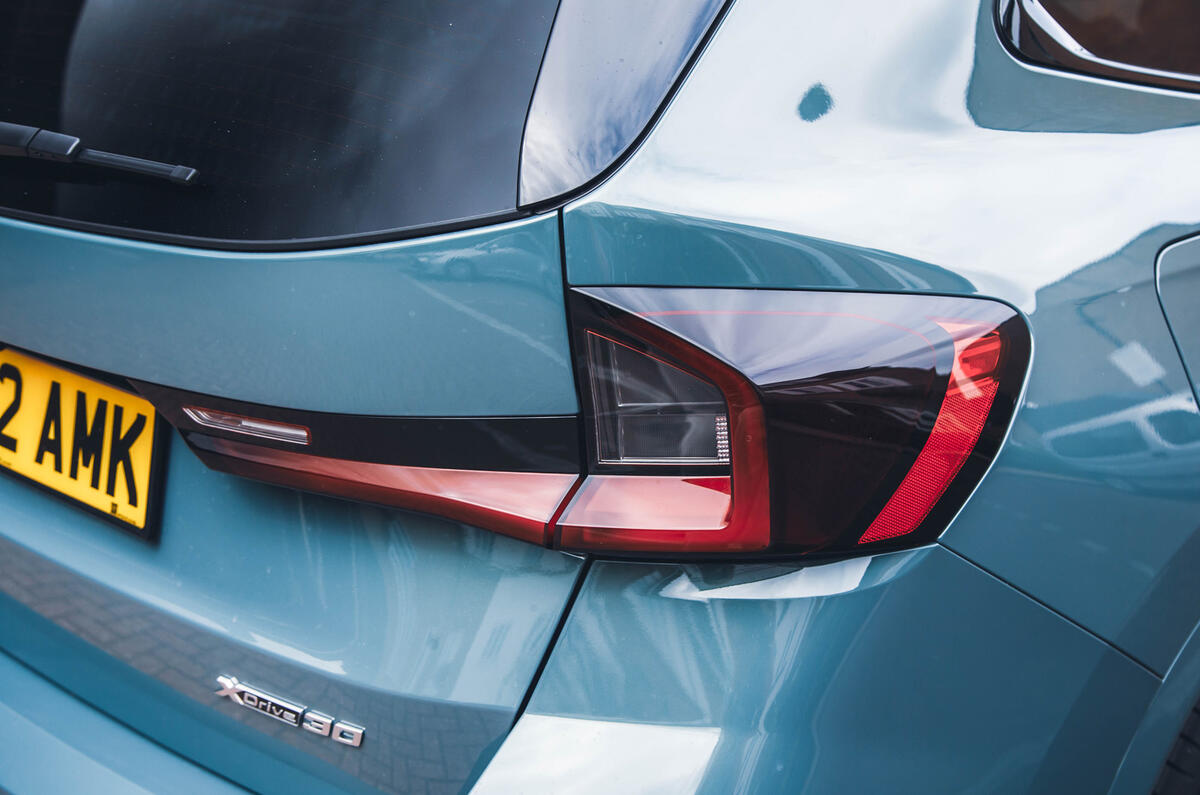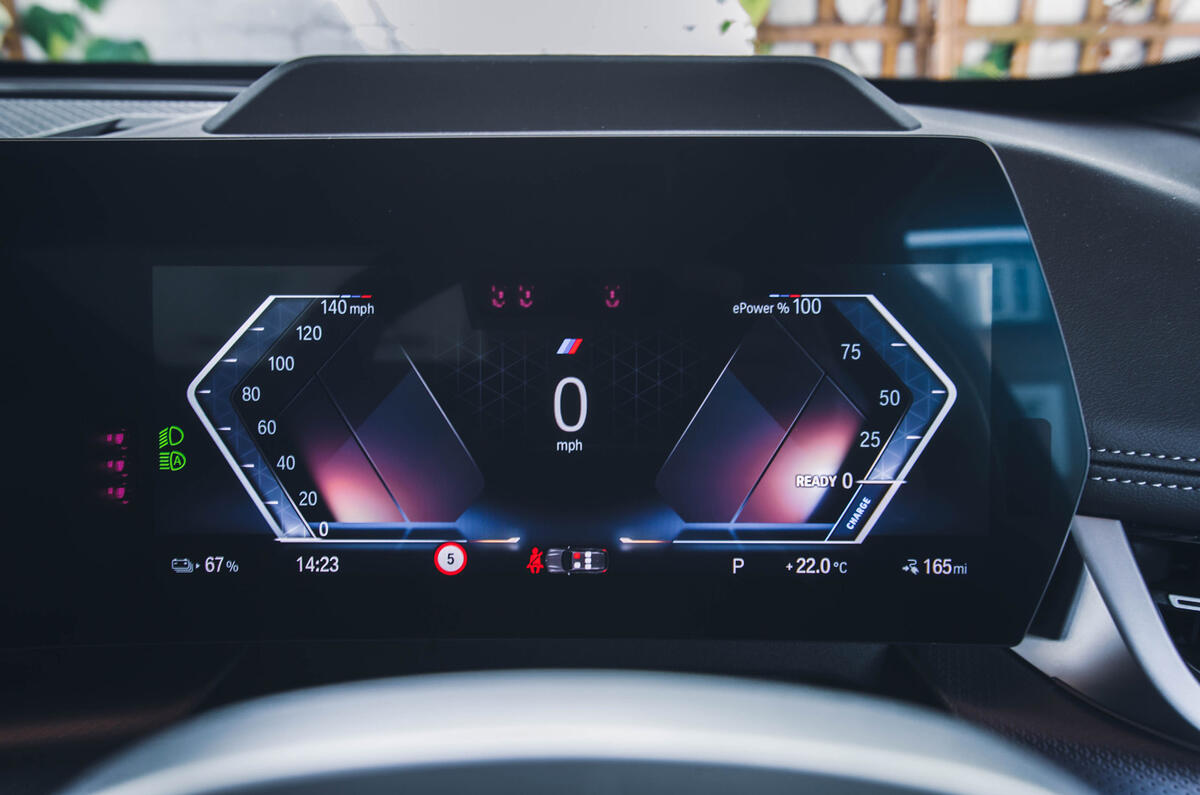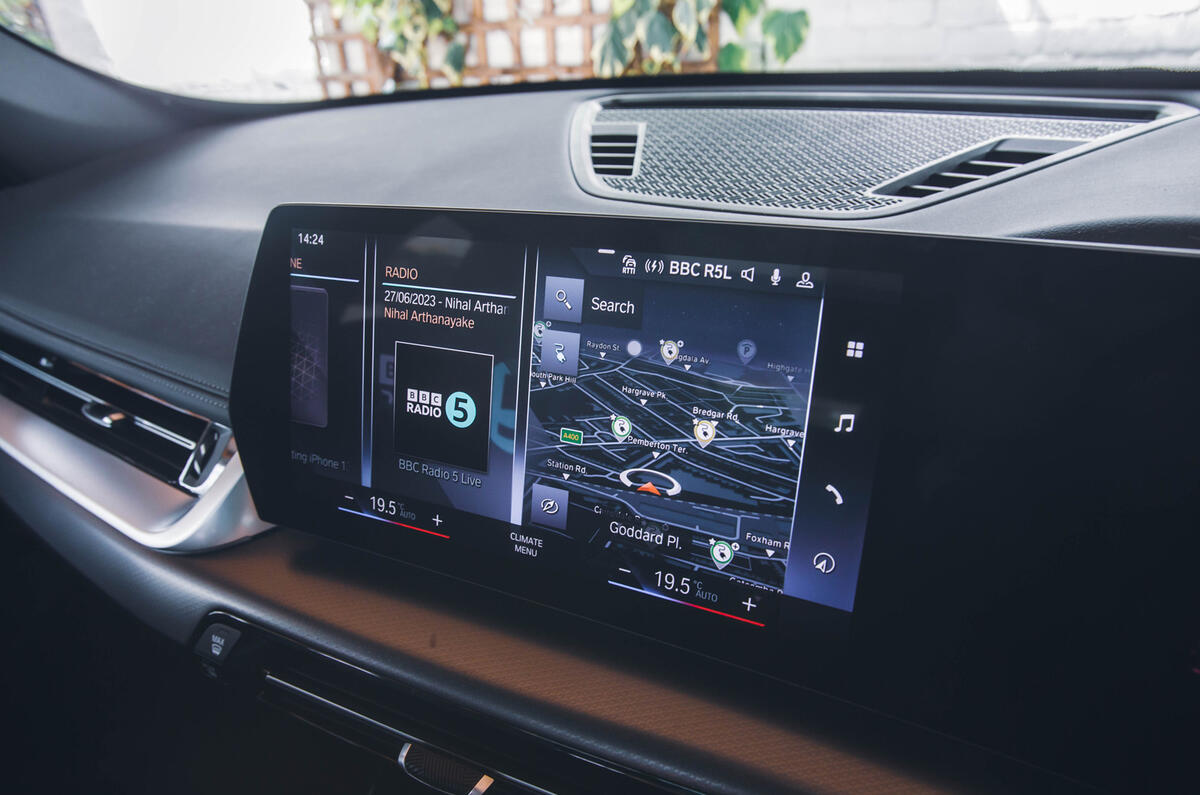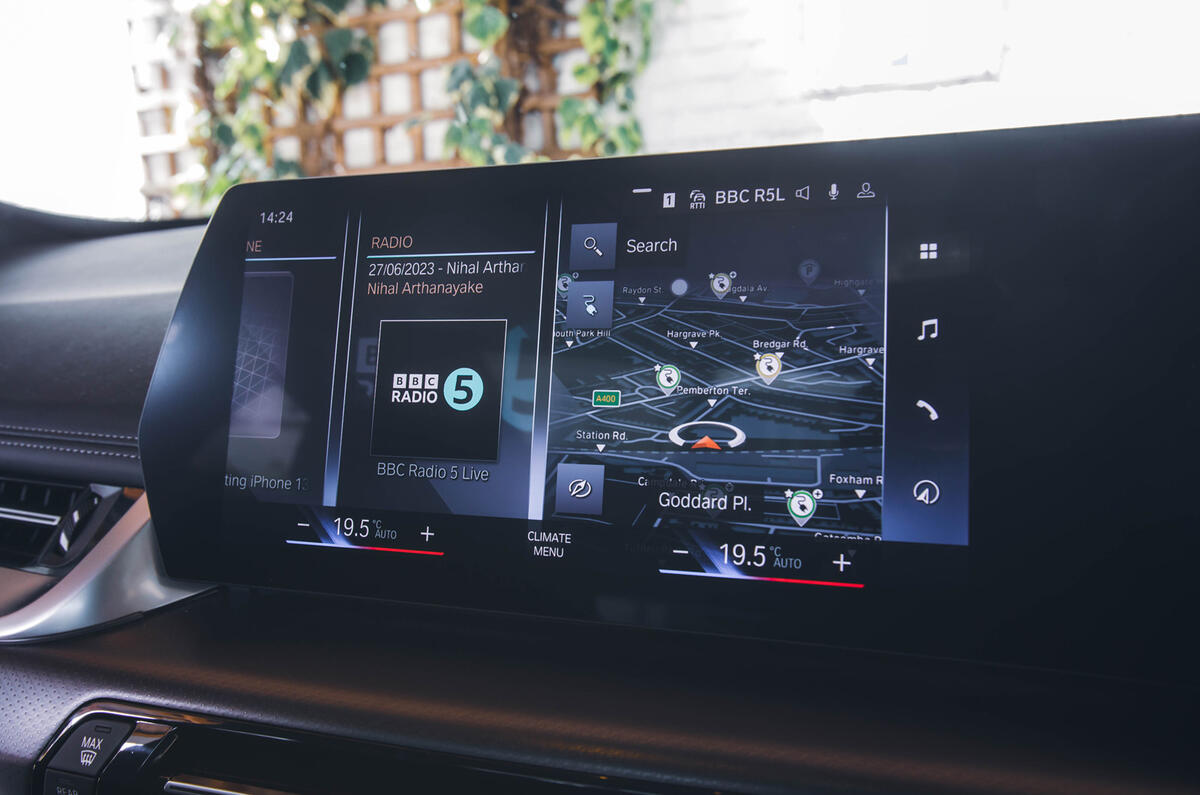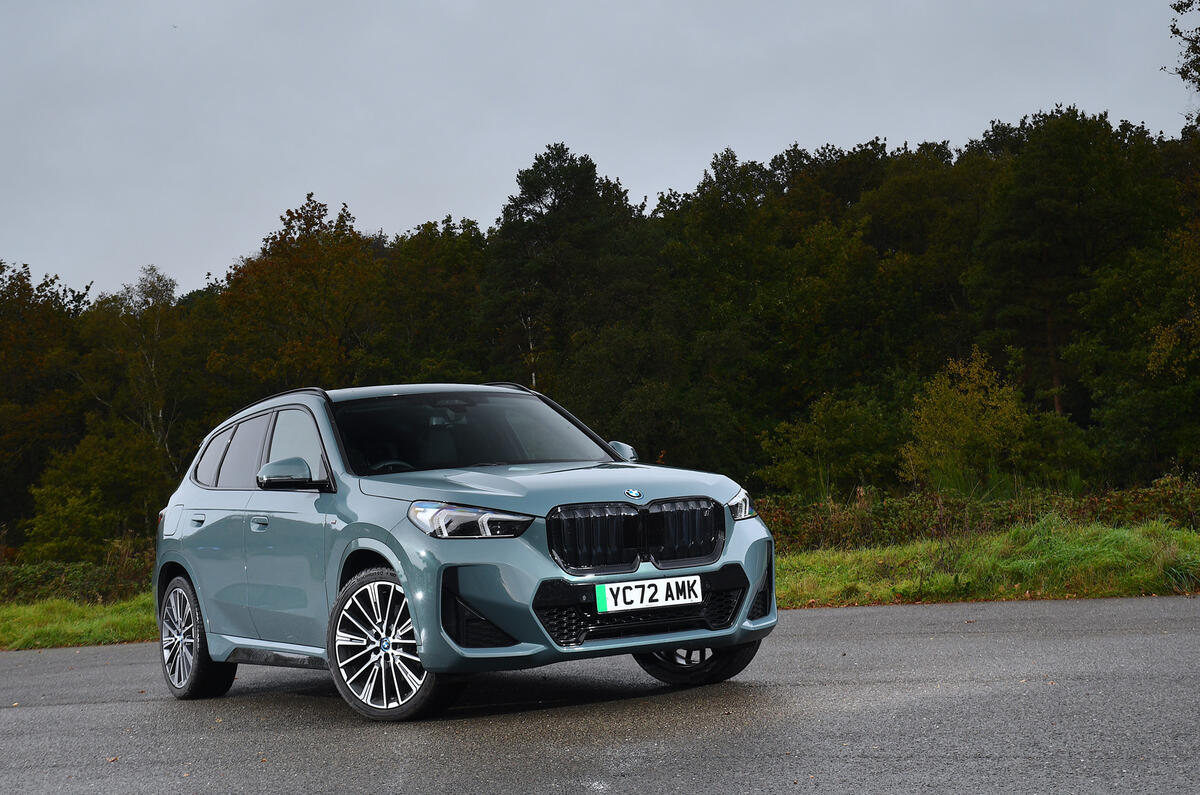Step into the iX1 M Sport’s modern and spacious interior and it’s hard not to be impressed. It’s especially roomy for the class, with lots of storage, hooks and cubby holes, with a floating centre console.
It certainly out-competes the Volvo EX40 and Audi Q4 E-tron, with aluminium seen throughout the cabin and pleasantly soft materials on the dashboard and armrests. The speakers look great too, made of finely machined metal.
Our M Sport test car was fitted with a panoramic sunroof, which flooded light into an otherwise gloomy interior. Sports seats are also standard on our car, which add a hint of firmness but are generally comfortable and supportive.
However, entry-level cars feel far less smart in comparison, sacrificing some soft touch materials for ones that feel cheaper and look less extravagant.
Rear space is available in abundance, with enough room for three passengers, while boot space measures 490 litres. That’s not too far off the larger iX3, and the seats can always be folded down thanks to their 40/20/40 configuration.
It is also far less than the Tesla Model Y, which offers 854 litres of space. You lose next to no boot capacity by choosing the electric version, but the X1’s sliding rear seats aren’t available on the iX1 and the EV loses a little bit of rear legroom.
The iX1’s infotainment is the centrepiece of the cabin. All cars get a 10.7in touchscreen infotainment system which is paired with a 10.25 digital driver’s display. The system runs BMW’s latest 9th generation operating system, which includes wireless Android Auto and Apple CarPlay connectivity.
It’s very visually crisp and pretty to look at, but it’s not the most intuitive system out there, and it’s not the most accessible system. BMW opted to remove many buttons and ergonomic switches with the iX1, meaning almost everything is controlled through the touchscreen. That said, there are some switches on the steering wheel which control the driver’s media source and volume.
The touchscreen houses all the climate controls, which makes adjusting on the move a bit tricky. It takes almost ten taps to switch on the heated seats, set them to their highest level and find yourself back to the home screen. It’s also quite distracting, with cameras popping up when you’re required to turn off the motorway, or when you navigate through traffic.
The digital cluster is a little easier to use thanks to the steering wheel buttons, but it’s still more style over substance. It’s a very pretty display and very clear, but it’s quite messy and there’s a lot of unused space.
There's no arguing with the excellent seats and flexible driving position, which ensure that anyone will be kept comfortable. BMW has done a sterling job with noise isolation, too.






